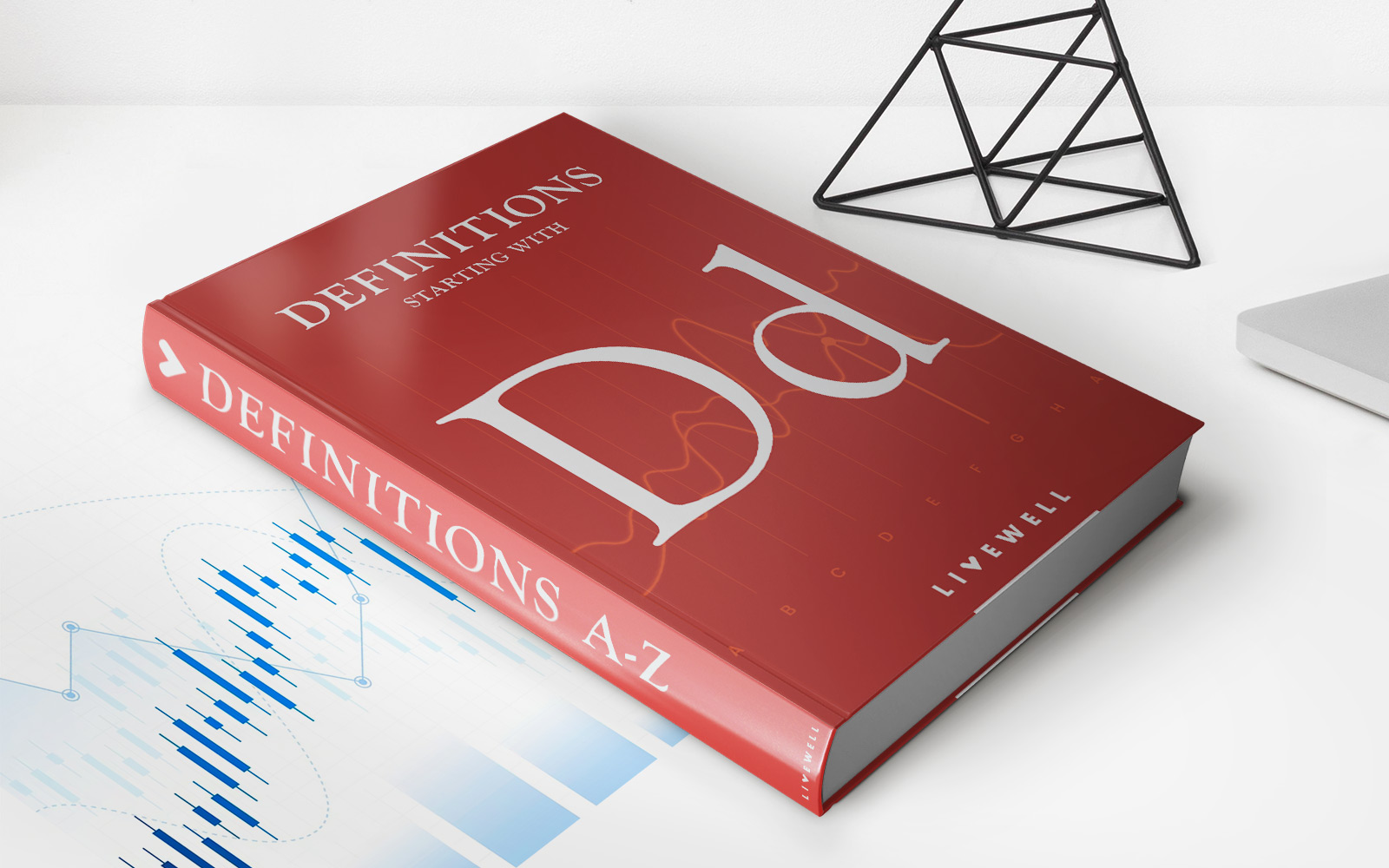

Finance
What Does “Available Credit” Mean
Published: January 10, 2024
Learn the meaning of "Available Credit" in the world of finance and how it impacts your financial status. Gain insights into managing your credit wisely for a secure future.
(Many of the links in this article redirect to a specific reviewed product. Your purchase of these products through affiliate links helps to generate commission for LiveWell, at no extra cost. Learn more)
Table of Contents
Introduction
Welcome to the world of personal finance, where understanding key terms and concepts is essential for managing your money effectively. One such term that plays a crucial role in your financial well-being is “available credit.” Whether you are applying for a loan, using a credit card, or monitoring your credit score, knowing what available credit means is important.
Available credit refers to the amount of money that you can borrow or spend using a credit card or a line of credit. It represents the difference between your credit limit and your current balance, indicating how much credit you still have at your disposal. This number determines your financial flexibility and the ability to make purchases or access funds when needed.
Understanding how available credit is calculated and how it impacts your financial standing is essential for making informed decisions about your money. In this article, we will explore the concept of available credit in detail, its importance in managing your finances, and how to maximize it.
Definition of Available Credit
Available credit is the amount of funds that a lender or financial institution has made available to you for borrowing or spending. It is usually associated with credit cards, lines of credit, or personal loans. Available credit represents the difference between your maximum credit limit and the current balance on your account.
When you open a credit card or obtain a line of credit, the lender determines a credit limit, which is the maximum amount of money that you can borrow or spend. For example, if your credit card has a limit of $5,000, that is your available credit. As you make purchases or borrow funds, your balance increases, reducing the available credit amount.
Available credit is crucial because it determines your borrowing capacity and financial flexibility. It represents the resources you have at your disposal to make purchases, cover expenses, or handle emergencies. Having a healthy amount of available credit can provide a safety net and allow you to take advantage of opportunities or navigate unexpected financial situations.
It’s important to note that available credit is not a measure of wealth or financial stability. It only indicates the unused portion of your credit limit. Having a high available credit does not imply that you should max out your credit cards or continually borrow money. Responsible credit management involves utilizing credit wisely and maintaining a healthy credit utilization ratio.
How Available Credit is Calculated
The calculation of available credit is relatively straightforward. It involves subtracting your current balance from your credit limit to determine the remaining amount that you can borrow or spend.
For example, if your credit limit is $10,000 and your current balance is $2,500, your available credit would be $7,500 ($10,000 – $2,500).
It’s important to note that the current balance used to calculate available credit may include both purchases and cash advances, along with any accrued interest or fees. Additionally, if you have outstanding balances on other credit accounts or loans with the same financial institution, these balances may also factor into the calculation of available credit.
It’s worth mentioning that some lenders may have policies in place that restrict the availability of credit in certain situations. For instance, if you consistently make late payments or exceed your credit limit, the lender may lower your available credit or suspend borrowing privileges temporarily. It’s crucial to understand and abide by the terms and conditions provided by your lender to maintain a healthy available credit.
Remember, your available credit is not static; it can fluctuate based on your borrowing and repayment activities. By making timely payments and keeping your balances low, you can potentially increase your available credit over time. On the other hand, carrying high balances or missing payments can reduce your available credit and negatively impact your creditworthiness.
Keep in mind that the calculation of available credit applies to revolving credit accounts like credit cards or lines of credit. For installment loans, such as a mortgage or car loan, the available credit does not change as you make payments. Instead, the loan balance decreases, and the available credit becomes irrelevant until the loan is fully paid off.
Importance of Available Credit
Available credit plays a significant role in your personal finance management and financial well-being. Here are a few key reasons why it is important:
1. Financial Flexibility: Having available credit provides you with the flexibility to make purchases, cover unexpected expenses, or handle emergencies. It serves as a safety net when you need immediate funds and allows you to avoid relying on high-interest loans or draining your savings.
2. Credit Utilization Ratio: Your available credit is a crucial factor in calculating your credit utilization ratio, which is the percentage of your available credit that you are currently using. Lenders consider this ratio when assessing your creditworthiness. Maintaining a low credit utilization ratio (typically below 30%) can positively impact your credit score and increase your chances of accessing favorable loan terms and interest rates.
3. Credit Score Improvement: Managing your available credit responsibly can have a positive impact on your credit score. By utilizing only a small portion of your available credit and making timely payments, you demonstrate responsible credit usage. This can boost your credit score over time and open up opportunities for better financial products and services.
4. Borrowing Capacity: Available credit determines your borrowing capacity. If you have a significant amount of available credit, lenders may be more willing to approve your loan applications and extend higher credit limits. This can be beneficial if you have upcoming large purchases or investment opportunities.
5. Emergency Preparedness: Having sufficient available credit can provide peace of mind during unexpected situations. Whether it’s a medical emergency or a home repair, having access to credit can help you navigate such scenarios without unnecessary stress or disruptions.
Overall, understanding the importance of available credit empowers you to make informed financial decisions and improve your financial health. It is essential to manage your available credit responsibly by using it wisely, keeping balances low, and making consistent, timely payments.
Factors That Affect Available Credit
Several factors can impact your available credit, and it’s important to be aware of them to manage your finances effectively. Here are some significant factors that can affect your available credit:
1. Credit Utilization: Your credit utilization ratio, which is the amount of credit you are using compared to your credit limit, plays a crucial role in determining your available credit. Keeping your credit utilization ratio low can help maintain a healthy available credit. High credit utilization may signal a higher risk to lenders and result in a reduction in available credit.
2. Payment History: Your payment history is an essential factor that influences your creditworthiness. Consistently making on-time payments not only helps build a positive credit history but also demonstrates financial responsibility to lenders. Late or missed payments can negatively impact your credit score and potentially limit your available credit.
3. Creditworthiness: Your overall creditworthiness, including your credit history, credit score, and income, can affect your available credit. Lenders assess these factors when determining your credit limit and may offer lower limits to individuals with lower credit scores or limited credit history.
4. Changes in Credit Limits: Lenders may periodically review and adjust credit limits based on factors such as your credit history, income changes, or changes in their lending policies. These adjustments can impact your available credit, so it’s essential to stay informed about any changes that may occur.
5. Loan Balances: If you have outstanding loan balances with the same financial institution that provided your credit card or line of credit, those balances can impact your available credit. Lenders may consider loan balances when determining your available credit, as it reflects your overall debt obligations.
6. Credit Line Increases or Decreases: Financial institutions may periodically review your account and offer credit line increases based on your credit history, payment history, and income. Conversely, they may also decrease your credit line if they perceive an increased credit risk. These adjustments can directly impact your available credit.
It’s important to remember that managing your available credit responsibly and maintaining a good credit history can help mitigate any negative impacts on your available credit. Regularly reviewing your credit reports, making timely payments, and keeping your credit utilization low are effective strategies for maintaining a healthy available credit.
Managing Available Credit
Effectively managing your available credit is essential for maintaining a healthy financial outlook and maximizing your borrowing capacity. Here are some key strategies for managing your available credit:
1. Regularly Monitor Your Credit: Stay on top of your credit by regularly checking your credit reports and monitoring your credit score. This helps you identify any errors or discrepancies and allows you to address them promptly. Monitoring your credit can also give you insights into how your credit utilization and payment history may impact your available credit.
2. Maintain Low Credit Utilization: Aim to keep your credit utilization ratio low, ideally below 30%. This means using only a small portion of your available credit. By keeping your credit utilization low, you demonstrate responsible credit management and improve your creditworthiness, positively impacting your available credit.
3. Make Timely Payments: Paying your bills on time is crucial for maintaining a good credit history and maximizing your available credit. Late or missed payments can negatively impact your credit score and may result in a reduction of available credit. Set up automatic payment reminders or consider using online banking tools to help you stay organized and avoid missing payments.
4. Avoid Excessive Credit Applications: Be mindful of applying for multiple credit accounts within a short period of time. Each application typically results in a hard inquiry on your credit report, which can temporarily lower your credit score. Lenders may also view frequent credit applications as a sign of increased risk, potentially impacting your available credit.
5. Regularly Review Your Credit Limit: Stay informed about your credit limit and be aware of any changes made by your financial institution. Periodically reviewing your credit limit ensures that you have an accurate understanding of your available credit and can help you make informed financial decisions.
6. Pay Off Debt Strategically: If you have multiple credit accounts, consider prioritizing the repayment of high-interest debt first. By paying off high-interest debt, you not only save on interest charges but also potentially increase your available credit as the balances decrease.
7. Communicate with Your Lender: If you are experiencing financial difficulties that impact your ability to make payments or manage your available credit, it’s important to communicate with your lender. They may be able to provide alternative payment arrangements or offer guidance to help you navigate challenging situations.
Remember, managing your available credit responsibly is key to maintaining a healthy financial outlook. By proactively monitoring your credit, keeping your credit utilization low, and making timely payments, you can optimize your available credit and improve your overall financial well-being.
Tips for Maximizing Available Credit
Maximizing your available credit can provide you with financial flexibility and improve your creditworthiness. Here are some helpful tips to make the most of your available credit:
1. Keep balances low: Aim to keep your credit card balances as low as possible. High balances can negatively impact your credit utilization ratio and potentially decrease your available credit. Paying off your balances in full each month is ideal, but if that’s not feasible, try to keep them well below your credit limit.
2. Request credit line increases: Contact your credit card issuer to inquire about increasing your credit limit. A higher credit limit increases your available credit, reducing your credit utilization ratio and potentially improving your credit score. This request may require a review of your credit history and financial circumstances.
3. Avoid closing old credit accounts: Length of credit history is a factor in credit scoring. Closing old credit accounts can lower the average age of your accounts and impact your creditworthiness. Instead, keep these accounts open, even if you don’t actively use them, to maintain a longer credit history and potentially increase your available credit.
4. Consider a balance transfer: If you have high-interest credit card debt, consider transferring the balance to a card with a lower interest rate. This can save you money on interest charges and potentially free up some of your available credit for other purposes.
5. Pay off debt strategically: If you have multiple credit accounts, consider utilizing the debt snowball or debt avalanche method to pay off your debts strategically. By tackling high-interest debts first or focusing on accounts with small balances, you can quickly reduce your overall debt and increase your available credit.
6. Be cautious with new credit applications: While it’s important to have a healthy mix of credit accounts, avoid applying for too many new credit cards or loans within a short period. Each application can result in a hard inquiry, which temporarily lowers your credit score. Excessive credit applications may also raise concerns among lenders about your creditworthiness.
7. Regularly review and dispute inaccuracies: Regularly review your credit reports and ensure that the information is accurate. If you find any errors or discrepancies, dispute them with the credit reporting agencies to have them corrected. Inaccurate information could impact your credit score and potentially limit your available credit.
8. Avoid maxing out your credit limit: While your credit limit represents your available credit, it’s generally not advisable to max out your accounts. Maxing out your credit cards can negatively impact your credit utilization ratio and potentially make it harder to keep up with payments. Aim to keep your balances well below your credit limit to maintain a healthy available credit.
9. Pay bills on time: Consistently making on-time payments is crucial for maintaining a positive credit history and maximizing your available credit. Late or missed payments can lower your credit score and potentially lead to a reduction in available credit. Set up automatic payments or use reminders to ensure you never miss a payment deadline.
By implementing these tips, you can optimize your available credit, improve your creditworthiness, and establish a solid foundation for your financial well-being.
Conclusion
Understanding and managing available credit is vital for effectively navigating the world of personal finance. By grasping the concept of available credit and its calculation, you can make informed financial decisions, maintain a healthy credit utilization ratio, and maximize your borrowing capacity.
Available credit represents the amount of funds that you can borrow or spend, calculated by subtracting your current balance from your credit limit. It plays a crucial role in providing financial flexibility, improving creditworthiness, and preparing for unexpected expenses.
Several factors, such as credit utilization, payment history, and creditworthiness, can impact your available credit. By responsibly managing your credit, making timely payments, and avoiding excessive credit applications, you can safeguard and potentially increase your available credit over time.
Maximizing available credit requires maintaining low balances, requesting credit line increases when appropriate, paying off debt strategically, and reviewing your credit reports regularly. These steps can help you optimize your available credit, enhance your credit profile, and increase your overall financial well-being.
Remember, responsible credit management is key. It’s crucial to keep balances low, avoid excessive debt, make payments on time, and communicate with your lender if you encounter financial difficulties. By following these practices, you can harness the power of available credit and set yourself on the path to financial success.
As you embark on your financial journey, prioritize understanding and managing your available credit effectively. By doing so, you can pave the way for a brighter financial future and make the most of the resources available to you.














